A history of foreign starts at the Giro d'Italia
From San Marino to Israel, via Belgium, Greece and Denmark

Hungary doesn't have a grand cycling tradition, with only a handful of races on the European Continental circuit and youngsters Attila Valter (CCC Team) and Barnabás Peák (Mitchelton-Scott) the country's only WorldTour representatives. This season, though, it was set to get a visit from a Grand Tour for the first time ever, with the Giro d'Italia starting in Budapest.
The Hungarian Grande Partenza would have been well under way by now, if it wasn't for the COVID-19 pandemic. The Giro has been postponed to October 3, and Hungary won't be a part of it. Last Saturday would have been the opener: a short individual time trial in Budapest, the 14th of the race's foreign starts.
The sprinters were due to have their chances on stage 2 from Budapest to Gyor on Sunday and again on stage 3 on Monday after the stage from Székesfehérvár to Nagykanizsa.
The Giro's first start on foreign shores came in 1965 in the enclave microstate of San Marino, with seven further foreign starts coming in the past two decades. Here, we look back at when the Giro ventured abroad.
1965 – San Marino
After decades of race starts within Italy – exclusively in Milan, apart from the 1911 Grande Partenza in Rome to celebrate the 50th anniversary of Italy's unification – the Giro started to venture further afield in the 1960s with starts in Turin, Bolzano, Rome and Naples.
San Marino, located near Rimini on Italy's east coast, only hosted the start of stage 1 of the 1965 Giro, with the stage running to a hilltop finish in Perugia to the south. Molteni rider Michele Dancelli won the second stage of his career that day, en route to a 12th place finish at the end of the race.
The Lombardo would go on to win nine more Giro stages during his 12-year career, also winning Flèche Wallonne and Milan-San Remo. Meanwhile, Salvarani's Vittorio Adorni won the 1965 race overall by 11:26 from Italo Zilioli.
Get The Leadout Newsletter
The latest race content, interviews, features, reviews and expert buying guides, direct to your inbox!
1966 – Monte Carlo, Monaco
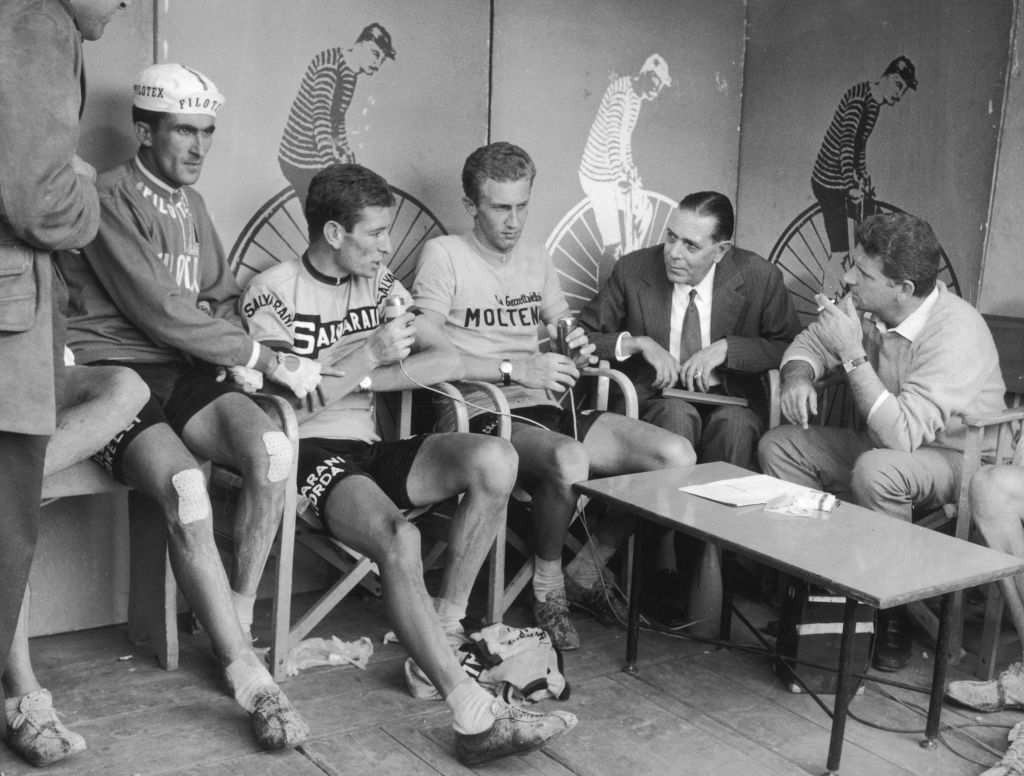
The first 'foreign' start must have been a success, as the move was repeated the following year – this time a slightly more adventurous trip to the Principality of Monaco, some 12km outside of Italy's borders.
Once again, though, the peloton was quickly back in Italy for the finish in Diano Marino on the Ligurian coast. Vittadello rider Vito Taccone, who won the race's mountain competition in 1961 and 1963, took the first pink jersey of the race, triumphing ahead of Bruno Mealli and Dino Zandegù on a tough opening stage.
Molteni man Gianni Motta, who finished eighth on stage 1, took the overall win in Trieste, once again beating Zilioli into second place by 3:57. Taccone finished up in ninth place overall in Vittorio Veneto.
1973 – Verviers, Belgium
After a six-year stay in Italy, the Giro branched out once again in 1973, as long-time race director Vincenzo Torriani resolved to visit each of the six founding member states of the European Economic Community (EEC). The move came after Torriani learned that the Tour de France was planning to visit Great Britain (Plymouth hosted a stage in 1974).
With Eddy Merckx on top of the cycling world and having won three Giri (1968, 1970 and 1972), it was perhaps no surprise that Belgium was the next foreign host of the race. Merckx won the opener, of course: a two-man prologue in Verviers.
He won stage 1 as well, which headed into Germany to Cologne via the Netherlands. Stages to Luxembourg, Strasbourg and from Geneva followed, meaning Torriani achieved his EEC goal in just five days of racing.
Merckx held pink all the way to Milan, taking six stages along the way – half of Belgium's 12 triumphs at the race. His fourth Giro win would come 7:42 ahead of second-placed Felice Gimondi.
1974 – Vatican City
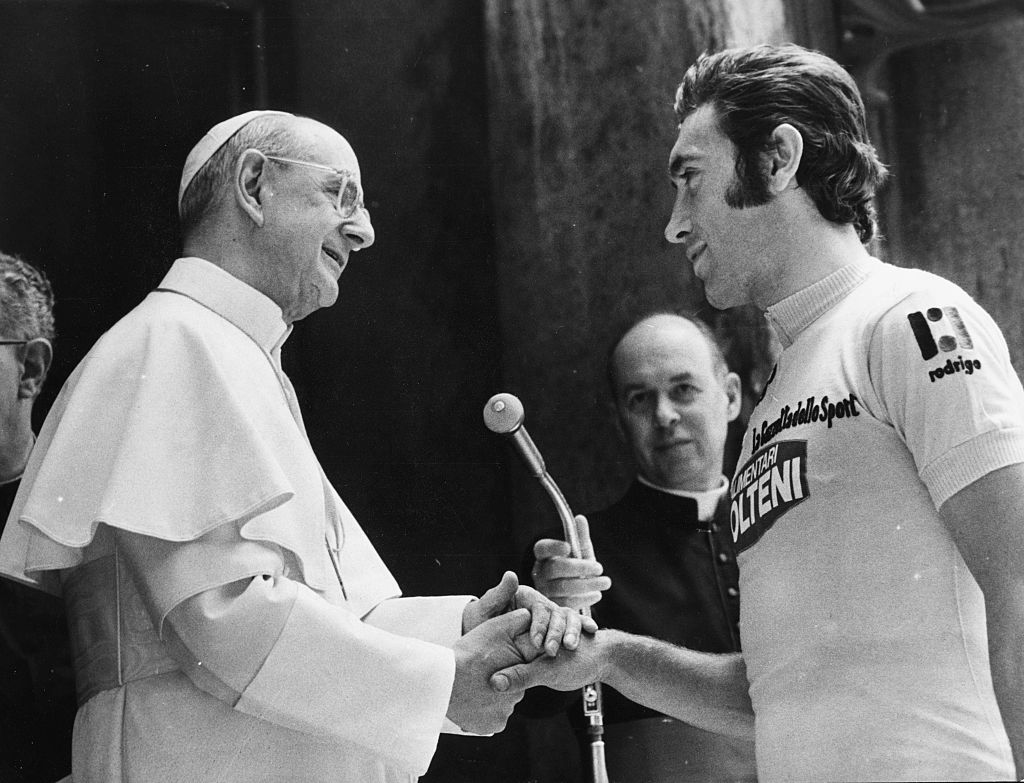
Much like the 60s, the Giro went foreign for the second year in succession in 1974. The Catholic city-state in Rome hosted the 1974 opener. The 121 acres of the Vatican was nowhere near large enough to host even a prologue, so the peloton simply rolled out of St Peter's Square.
Stage 1 headed to the south of the Lazio region, with Belgian neo-pro Wilfried Reybrouck taking the biggest win of his career. The 21-year-old shocked the sprinters in Formia to wear pink for two days.
In the end, Merckx triumphed overall once more, winning two stages along the way as he beat Gianbattista Baronchelli by 12 seconds to take the penultimate Grand Tour victory of his career.
1996 – Athens, Greece
It would be over 20 years before the race's next foreign start, with Torriani never sanctioning another after the Vatican. He stepped down in 1989 after 40 years as Giro boss, and passed away just weeks before the next overseas Grande Partenza, this time in Athens, Greece.
Much like Hungary, the country didn't have the strongest link to cycling at the time, though there was method to the madness behind race director Carmine Castellano's special start: 1996 was the centenary year of both Italian newspaper La Gazzetta dello Sport and the Olympic Games.
Three stages were run in Greece, the first of which featured chaotic conditions as the peloton raced from Athens to Athens around the Attic Coast. Bad roads, parked cars and flooding caused a multitude of crashes before Saeco's Silvio Martinello sprinted to the win ahead of Fabrizio Guidi after the team's main sprinter, Mario Cipollini, complained of illness during the stage.
Swedish neo-pro Glenn Magnusson took a surprise sprint win on stage 2 after a go-slow protest saw the 238km stage last almost seven hours, and then the final day in Greece saw Giovanni Lombardi edge out Stefano Zanini in another sprint finish.
After the challenges of Greece, there would be another awaiting the teams as they got back to Italy, though. Florence police had discovered that a Tuscan pharmacy was selling large quantities of EPO to pro cyclists, and so travelled down to Brindisi to search team cars as they disembarked the ferry.
However, CONI officials had informed teams of the carabinieri's plans, and a story was printed in La Gazzetta, too. Team cars then took the long way around, driving through the Balkans and entering Italy from the north, while others dumped their drugs over the side of the ferry.
In the end, the Giro was Pavel Tonkov's, with the Russian taking his biggest career success for his Panaria team, 2:43 ahead of Carrera Jeans rider Enrico Zaina.
1998 – Nice, France
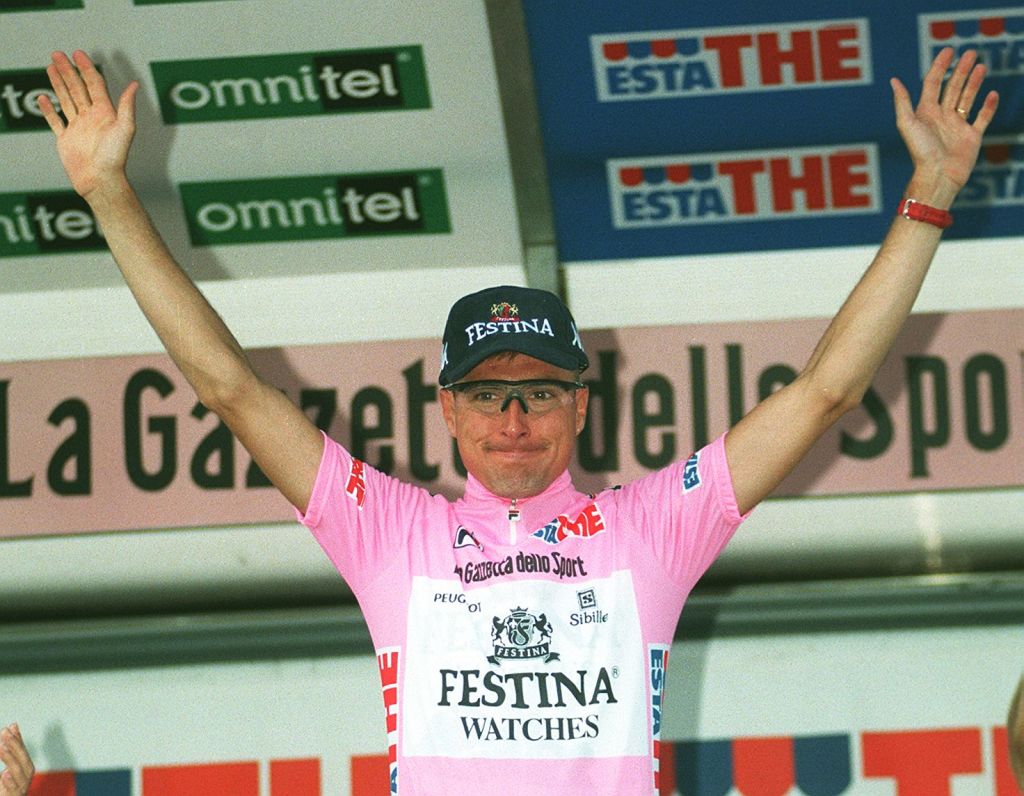
Two years after the trip to Greece came a shorter journey outside Italy's borders – this time to the south of France. The opening prologue took in 7km around the streets of Nice, while stage 1 ran from Nice to Cuneo, taking in the Colle di Tenda along the way.
Festina's Alex Zülle – among the race favourites after wins at the Vuelta a España in 1996 and 1997 – took the win in Nice, edging out Cantina Tollo time triallist Serhiy Honchar by just over a second. Zülle would remain in GC contention until the final days of the race, collapsing as Marco Pantani dominated the summit finish at Montecampione.
Two-time KOM winner Mariano Piccoli of Brescialat took the win in Cuneo, attacking late on to outwit the sprinters after stage favourite Mario Cipollini had lost two lead-out men to a late crash. Pantani took the overall win three weeks later – the first part of the last Giro-Tour double to date.
2002 – Groningen, the Netherlands

The first of three Dutch Giro starts came 18 years ago, and, as was the case in 1973, the opening stages visited a number of countries on the way back to Italy. The city of Groningen in the north of the country played host to the technical 6.5km prologue.
Phonak's Juan Carlos Domínguez won the prologue, while bad luck hit a number of big names, such as Mario Cipollini (15 seconds back in his tiger skinsuit after suffering a puncture), Ivan Gotti (last-second helmet change) and Tyler Hamilton (who crashed).
Stage 1 went into Germany, to Münster. Aqua Sapone's Cipollini unsurprisingly won the sprint, while Hamilton, Pavel Tonkov and Marco Pantani were among those to fall victim to a split after a crash in the final kilometre.
Ans in Belgium was the next day's finish, cribbing the finale of Liège-Bastogne-Liège. Stefano Garzelli delivered the win for Mapei but was later kicked out of second place midway through the race after testing positive for a masking agent.
Cipollini doubled up on stage 3, which ran from Verviers to Esch-sur-Alzette in Luxembourg, while Lotto's Robbie McEwen beat the Italian to the line in Strasbourg the following day, before the race finally reached Italy on stage 5.
Index-Alexia's Paolo Savoldelli took the first of two career Giro wins that year, riding quietly and consistently for the first two weeks of the race before taking pink in the Dolomites and defending it to Milan.
2006 – Seraing, Belgium
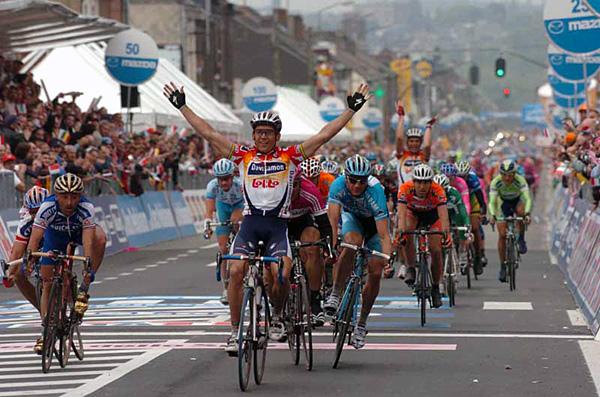
Belgium became the first country to repeat a foreign start at the Giro, playing host to four stages in 2006. Paolo Savoldelli, then riding for Discovery Channel, dominated the opening time trial, beating 2004 prologue winner Bradley McGee by 11 seconds over the 6.2km course.
Robbie McEwen got the best of his fellow sprinters on stages 2 and 4 in Wallonia, while Gerolsteiner's Stefan Schumacher had taken over the pink jersey after a late attack on the cobbled climb to the finish of a rain-soaked stage to Namur.
Ivan Basso lay low early on, but he was in the driving seat after his CSC team won the team time trial upon the race's return to Italy. He would go on to record the race's biggest winning margin since the 50s, triumphing by 9:18 over Phonak's José Enrique Gutíerrez.
2010 – Amsterdam, the Netherlands
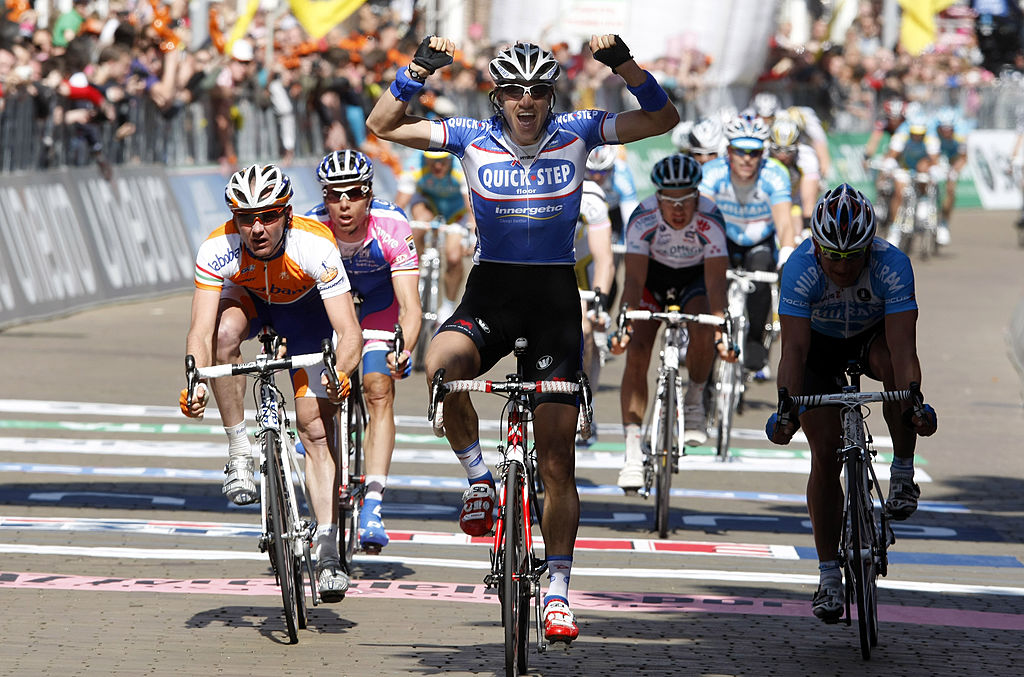
Next up was another trip to northern Europe, with three stages in the Netherlands. Team Sky's marquee new signing, Bradley Wiggins, won the opening time trial in Amsterdam. He was out of pink the next day, though, suffering the first in a series of crashes that saw him drop out of contention for a GC placing.
A number of crashes marred stage 2 to Utrecht, as Cadel Evans took pink and Garmin-Transitions sprinter Tyler Farrar nabbed the first of two stage wins that year, outsprinting HTC's Matt Goss to the line after Sky's Chris Sutton almost made a late attack stick.
Evans lost his lead on stage 3 to Middelburg as high winds and more crashes hit the peloton on the coastal route to Zeeland. Quick-Step sprinter Wouter Weylandt triumphed on the day, while Ivan Basso won his second Giro – one of the most thrilling editions in recent memory.
2012 – Herning, Denmark
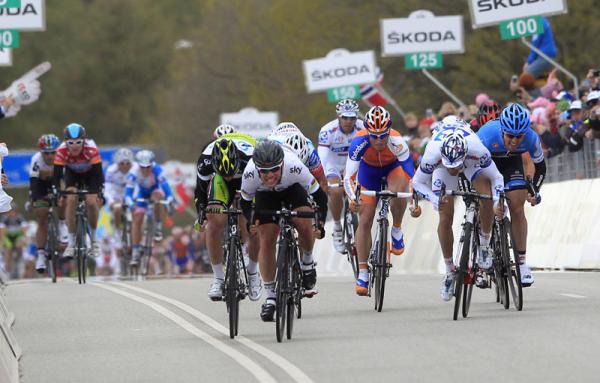
The 2010s saw the Giro head even further afield, with trips to more and more far-flung destinations. Central Denmark hosted the 2012 Grande Partenza, with a short time trial and two sprint stages on the menu.
A young Taylor Phinney took the opener, flying around the course at 50kph to beat Geraint Thomas to pink. Then-world champion Mark Cavendish sprinted to victory on day two, also in Herning, after a late crash split the peloton.
Stage 3 to Horsens saw Orica-GreenEdge's Matt Goss triumph after the first two stage winners were caught in a late crash. The Australian delivered the team's first-ever Grand Tour stage win ahead of Juan José Haedo.
Ryder Hesjedal of Garmin-Barracuda won the overall title that year, beating Joaquim Rodríguez to victory in a Giro that never truly got going. Thomas De Gendt's podium-grabbing solo raid on the Stelvio proved the race's main highlight.
2014 – Belfast, Northern Ireland
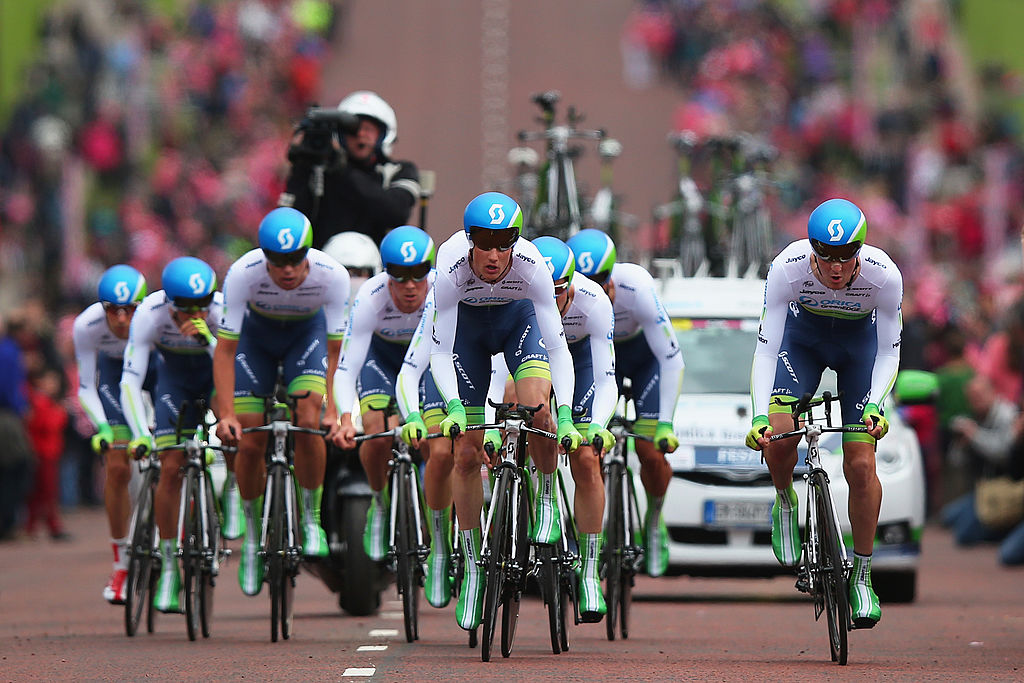
By now settling into a pattern of a biennial foreign start, the Giro headed further afield in 2014, to Northern Ireland and the Republic of Ireland.
The well-oiled Orica-GreenEdge time trial squad won the opening team time trial in Belfast, taking advantage of drier conditions than many of their competitors to deliver Svein Tuft to pink.
Stages 2 and 3 to Belfast and Dublin provided the same outcome – a Marcel Kittel sprint victory. The German enjoyed perfect lead-outs from his Giant-Shimano team before leaving the race with a fever before making it to Italy.
Movistar man Nairo Quintana won the race overall, taking pink after winning a polemica-filled stage 16 over the Stelvio. Rigoberto Urán completed a Colombian one-two in Trieste.
2016 – Apeldoorn, the Netherlands
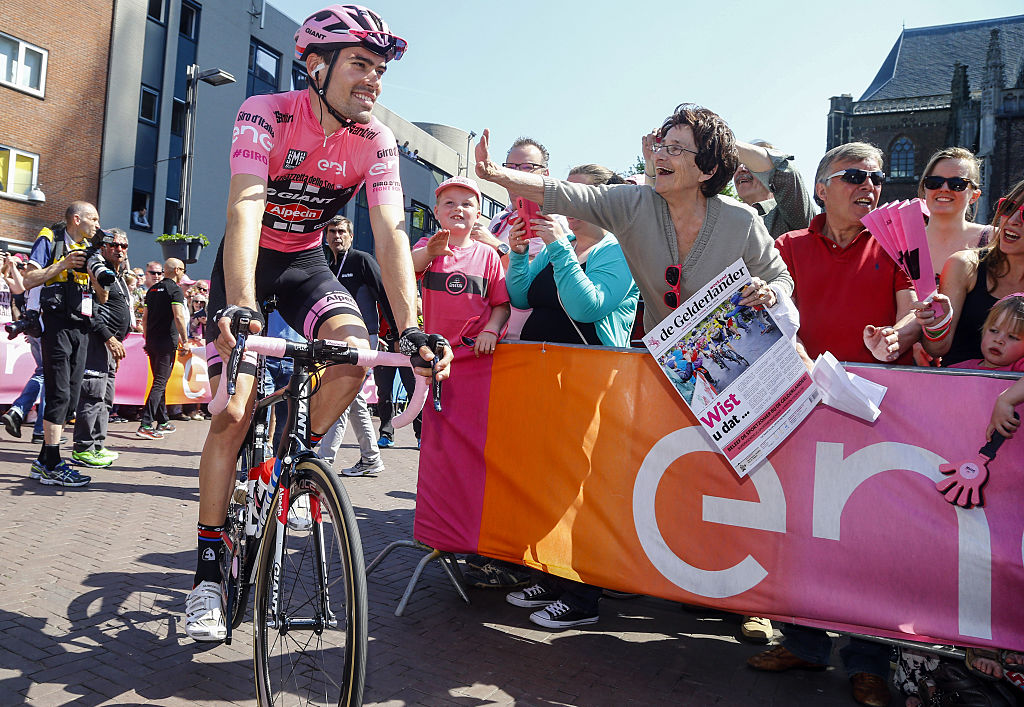
2016 brought with it the Giro's third trip to the Netherlands, and much like the previous three foreign starts, a time trial with two flat stages to follow.
Tom Dumoulin gave the home crowds something to cheer on day one with a win over Primož Roglič on the 9.8km TT course – his margin of victory just one-hundredth of a second.
Marcel Kittel picked up where he left off in 2014, again winning the two sprints on foreign ground. Once again, they were comfortable wins, with the German beating Arnaud Démare and Elia Viviani in Nijmegen and Arnhem.
Vincenzo Nibali would go on to win the race, staging a comeback for the ages, overhauling Esteban Chaves on stage 20 after previous leader Steven Kruijswijk crashed out of the race lead a day earlier.
2018 – Jerusalem, Israel
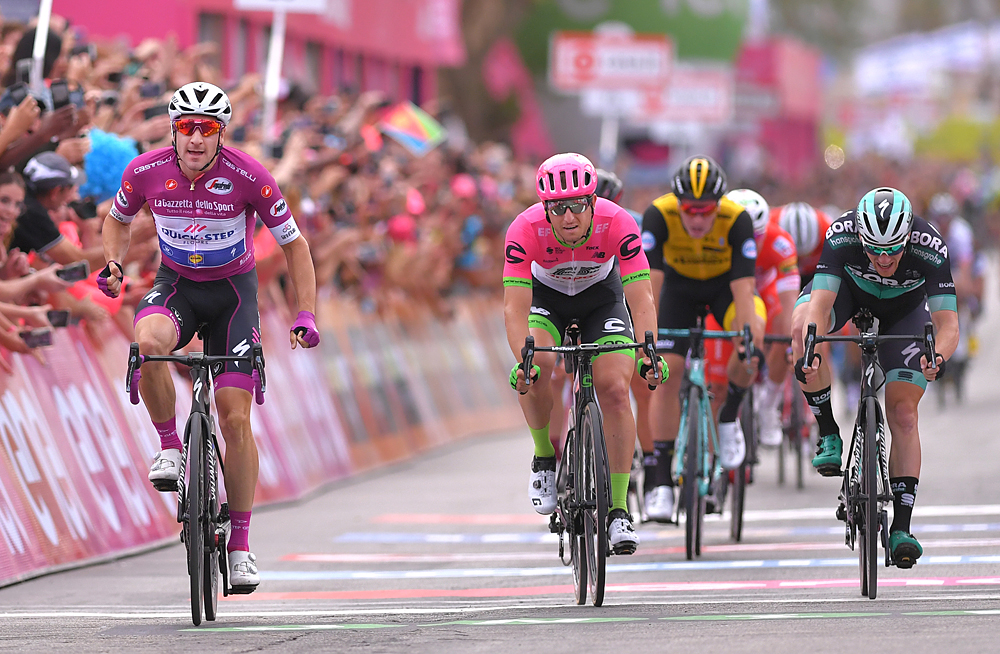
The most exotic – and controversial – Giro start to date saw the race visit Israel and, yes, once again another time trial followed by two sprint stages before a return to the peninsula.
Tom Dumoulin beat Rohan Dennis to the first pink jersey of the Giro on a 9.7km time-trial course in Jerusalem. The Dutchman wouldn't end up repeating his 2017 win overall, though, losing out to Chris Froome after the Brit's spectacular solo ride to Bardonecchia.
Back to Israel, and Elia Viviani was the man on form in 2018. Like Kittel in 2014 and 2016, the Italian shot to two sprint victories in a row on foreign soil. The Quick-Step Floors fastman eased to the win in a chaotic second stage, while stage 3 saw him bump between Sam Bennett and the barriers en route to the line.
Dani Ostanek is Senior News Writer at Cyclingnews, having joined in 2017 as a freelance contributor and later being hired full-time. Before joining the team, she had written for numerous major publications in the cycling world, including CyclingWeekly and Rouleur. She writes and edits at Cyclingnews as well as running newsletter, social media, and how to watch campaigns.
Dani has reported from the world's top races, including the Tour de France, Road World Championships, and the spring Classics. She has interviewed many of the sport's biggest stars, including Mathieu van der Poel, Demi Vollering, and Remco Evenepoel, and her favourite races are the Giro d'Italia, Strade Bianche and Paris-Roubaix.
Season highlights from 2024 include reporting from Paris-Roubaix – 'Unless I'm in an ambulance, I'm finishing this race' – Cyrus Monk, the last man home at Paris-Roubaix – and the Tour de France – 'Disbelief', gratitude, and family – Mark Cavendish celebrates a record-breaking Tour de France sprint win.